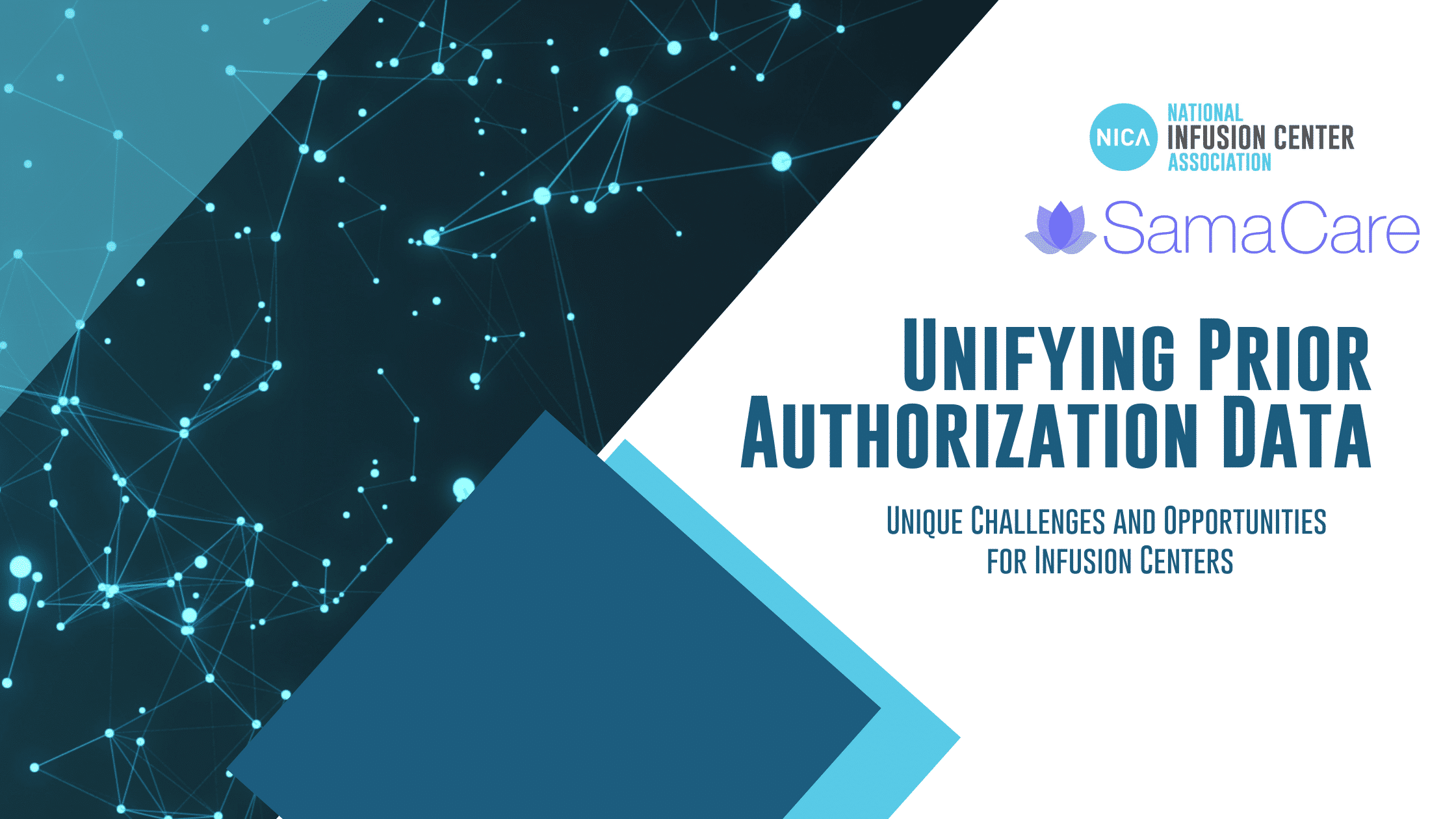The following post was authored in partnership with NICA partner, SamaCare. Prior authorizations are a burden across all specialties. In fact, in a 2022 survey by SamaCare, 91% of providers reported that prior authorizations have a “highly negative” or “somewhat negative” effect on patient care. Infusion centers face their own unique set of challenges when it comes to navigating the complex prior authorization landscape.
To begin, infusion centers typically deal with a high volume of external referral-based patients and administer numerous therapeutic brands. Infusion centers must rely on referring physicians to send over accurate and complete patient and clinical data – an administrative nightmare in and of itself. While providers sometimes turn to pharmaceutical hub services or market access teams to help navigate the complexities of prior authorizations, this can be time-prohibitive for infusion centers who must deal with numerous therapeutic brands and do not have the bandwidth to liaison individually with each and every distinct hub services organization.
Infusion centers must also navigate “site of care” related restrictions and requirements from payers. Many health plans contract with preferred infusion networks. Some payers require certain infusions to be administered in a non-hospital based site of care. Recently, some commercial payers have begun shifting certain injectables from medical to pharmacy benefits in a cost-cutting effort, adding complexity when the infusion center no longer bills for the drug but still administers the drug.
Perhaps most significantly, the stakes are higher for infusion centers to obtain approval in order to get reimbursed. Injectable and infusion therapeutics are expensive. As payers have continued to increase their efforts to manage drug spending, infusion centers have experienced increased denials and underpayments. Getting reimbursed for these drugs can financially make-or-break infusion centers.
Because of the complex payer landscape, numerous therapeutics involved, and referral-based patient population, the challenges in gaining a complete picture of prior authorization outcomes for infusion centers are substantial. However, unified prior authorization insights for infusion centers has never been more valuable. Unified insights into prior authorizations, such as average payer turnaround time by therapeutic, first-time denial rates, approval rates on appeal, and common causes for denials, can help infusion centers proactively optimize operations and patient care. In fact, in SamaCare’s 2022 survey, 91% of providers indicated that “consistent prior authorization delays or denials would impact their likelihood to prescribe a drug if there was an equally effective alternative in the market.”
Infusion centers would benefit from a holistic approach to comparing the prior authorization experience across therapeutics; one that unifies the submission, tracking, and management of prior authorizations across all plans and medical benefit drugs. Instead of navigating numerous portals and forms, providers could manage all prior authorizations from one portal and gain insight into practice-wide metrics like average payer turnaround times, denial rates, and more. Such a solution allows infusion centers and operators to decrease the rate of denials and decrease the referral turnaround time, ultimately increasing patient outcomes and reducing the financial stress to infusion centers. With one unified platform, infusion centers could not only save time by creating repeatable workflows, automated reminders, and leveraging features like one-click renewals, but also gain a holistic view of the pain points in their prior authorization management. Armed with these insights, infusion centers can make better decisions to improve patient care and reduce downstream reimbursement issues.
Want to learn more about the unifying prior authorization data and the unique challenges and opportunities the process presents for infusion centers? Join us for our live webinar. April 4, 2023 at Noon, Central time. Register here:
https://us06web.zoom.us/webinar/register/WN_pf7qjBxJTsOdeHjFig2GJQ
About the Author
We’d like to thank the experts at SamaCare for contributing to this sponsored article. SamaCare helps thousands of providers unify prior authorization submission, tracking, and management, through one easy-to-use portal. Visit SamaCare.com to learn more.
About the National Infusion Center Association
NICA is dedicated to ensuring that the nation’s infusion centers remain a safe, more efficient, and more cost-effective alternative to hospital settings for consistent, high-quality care.
Infusion providers have a vested interest in the sustainability of the infusion delivery channel and its ability to serve vulnerable patient populations. NICA Provider Members have a voice and a seat at the table to inform NICA’s activities and the opportunity to remain highly engaged in the expansion and optimization of the infusion industry. Learn more about becoming a NICA member, here: https://infusioncenter.org/member-partner-page
Is your organization interested in becoming a featured subject matter expert on The Infusion Blog? Email [email protected] to inquire about opportunities for participation.





